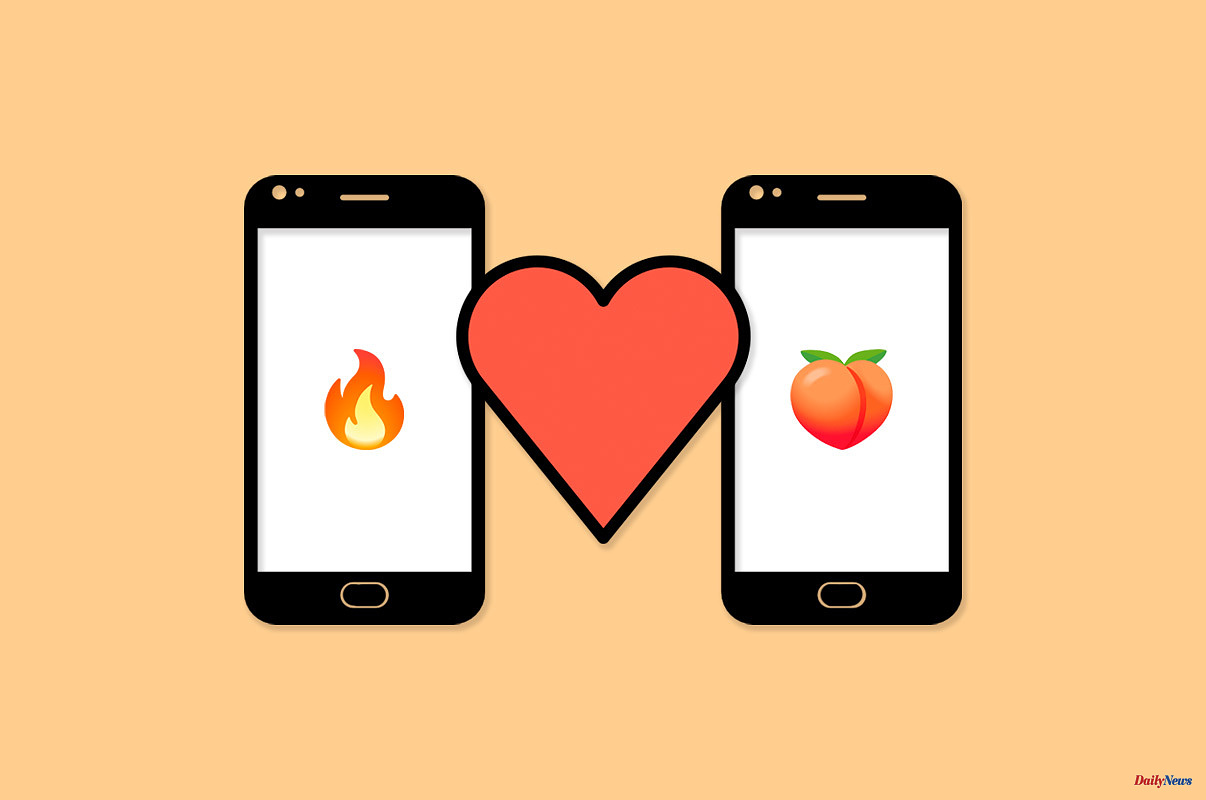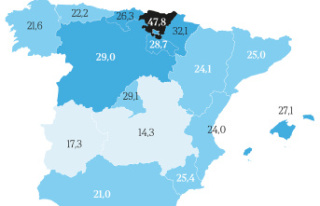Mobile applications for flirting, such as Tinder, have become the new bar, pub or nightclub where you can meet your better half and, if not, someone to have a good time with. Already in the early 2000s, meeting your boyfriend over the Internet was beginning to be popular, especially thanks to programs like 'El diario de Patricia', specialized in devirtualizing cybercouples.
A few decades later, apps allow you to meet new people by sliding your finger across the phone screen. Taking into account that, according to the INE, in Spain, the single population has gone from 12.6 million in 2010 to 14.6 in 2023, flirting applications have an increasingly larger niche.
Tinder is the most popular, so much so that it is already part of popular culture. Although it is widely used for casual encounters, there are many couples who met through the fueguito application (Tinder icon). In terms of the number of users, it has one of the highest ratios, although as a platform it has been the subject of debate several times. Because to what extent the app is interested in you meeting your ideal partner and then stop using it.
Happn is known as an alternative to Tinder, although it adds the bonus of geolocation. It is true that Tinder shows you users by proximity, however, in the case of Hapnn, the app shows the profiles of the people you have met on the street, in an establishment, bar or concert (or workplace). .
It obviously requires the other person to have the app installed. This stays in the background working to precisely detect the proximity of other users. In Happn it also shows where both profiles have crossed paths, if they both 'like', the option to start a conversation opens.
Badoo is one of the oldest when it comes to flirting. Before Tinder, she was quite successful in the web version of her, in times of Fotolog, MySpace or Hi5, and now she lives a second golden age. Little by little, she has been changing and trying different formulas until the current one, which is more like Tinder.
While Tinder continues to carry the stigma of casual encounters, Badoo has claimed fame for relationships as such, in the medium or long term. This allows you to show something more of yourself, apart from a minimal description and age. It also has a search engine with different parameters and even includes games to get to know each other better.
What used to be AdoptaUnTío is now called Adopte, although more than an app, it is a dating website, it has managed to be as popular as Bumble. Adopte became famous with different advertisements in which, in a rather transgressive way, it showed women deciding which boy they would take home from the supermarket. The way you ensure that a good number of women are using the app is to give them an advantage (aside from aggressive marketing).
The name change from AdoptaunTío to Adopte was done to focus on 'slow dating' and foster long-term relationships. To do this, she renounces not only her name, but her logo of a woman carrying a man in a cart. The app, which landed in Spain in 2013, already has more than three million people registered. In fact, it is one of the most used apps in countries like France and in Spain it is one of the most popular. Before Bumble, she was among the first to concede 100% of the decision to hook up with the woman.
In the case of Bumble, this app also works to meet friends. In this way, by opening up the range of possibilities so much, it allows you to meet people who, who knows, might end up being something else in the future. This app works by affinity, so in theory hit better than Tinder, which is governed more by the first physical impression.
It has paid functions, but just like other apps. Another difference with Tinder is that women are the only ones who can take the first step. Regarding data, according to Statista, in countries like Mexico, Bumble is the most used application after Tinder. Although this is not the only data that relates one app to another. Bumble was created by Whitney Wolfe, a former Tinder executive. In addition, since it has the aspect of being able to be used to make friends and even work networking, it is one of the apps with the lowest rates of abuse.
This application is well known, especially among rockers, metalheads and other urban tribes closely linked to music. In fact, it's very common to see promotions for this app on social networks like Instagram, where testimonials from goths or alternative people in general appear, saying that thanks to Turn Up they found the person to go to clubs and concerts with.
The way to contact another person is through the 'blind test', in which you must demonstrate if you are musically compatible (using Shazam is not worth it). The app will play a few seconds of song and you will have to answer which one and from which group. Don't worry though, you can also match in a more traditional way. If it is reciprocated, it will open the possibility of starting a conversation.
Meetic is famous for its app tagline for discerning singles. The reality is that this dating website is not that demanding, but most of the functions are paid, specifically they require a subscription. Sometimes they organize physical events and it has an algorithm that segregates the profiles based on the ones they answer in a questionnaire, that is, by affinities. It is one of the most conservative and traditional, maintaining certain dynamics of the old dating websites. It is also very unpopular with young people.
Ourtime is the 50+ version of Meetic. In fact, they belong to the same group, Match Group, just like Tinder, OkCupid, Hinge or PlentyOfFish. This application, to match users, does so based on affinity, academic training, tastes, hobbies, personality, among others. To find out all this data, use a questionnaire, but the difference is that Ourtime has a chat with a virtual assistant that will guide the user to complete their profile. It also has the figure of a coach or love coach, who advises on appointments, how to prepare them, upon payment, of course.
Grindr would become the sister of Tinder oriented to the homosexual and bisexual collective. It is also one of the most used apps in Spain, with more than 50 million downloads, and its operation is similar to that of Tinder. Users appear based on location and proximity, and while like Tinder, it's often used for more casual hookups, something more enduring can emerge from these. The main difference is that instead of showing users one by one, all the closest ones are shown at the same time on a main screen to be able to choose from all of them.
Less popular, but which also have a large number of users, are OkCupid, which classifies the affinities of its users based on a 15-question questionnaire; or Fruitz, popular among young people and whose difference lies in being able to show on your profile, through a code of different fruits, what kind of relationship you are looking for (cherry if you are looking for your soul mate, grapes if you want a date without going any further). , a watermelon if you are looking for someone with the right to touch and a peach if you only want one night without repeating).
There is also Lovoo, better known in Germany than in Spain, which is focused on people under 35 years of age; Hinge, with an interface more similar to Instagram and a system of answering turns to avoid ghosting; Edarling, in which it is the platform itself that matches users according to affinity; Jaumo, who is on his way to becoming the next Tinder; Plenty of Fish, which was also born as a web and is maintained as an app with users, generally, over 30; Gleeden, a self-described website for cheating couples (particularly women), similar to what the old Ashley Madison was; or Match, another of the classics like Meetic, specialized in dating and love relationships, although in order to date, becoming a premium and paying ends up being necessary.
According to the criteria of The Trust Project












